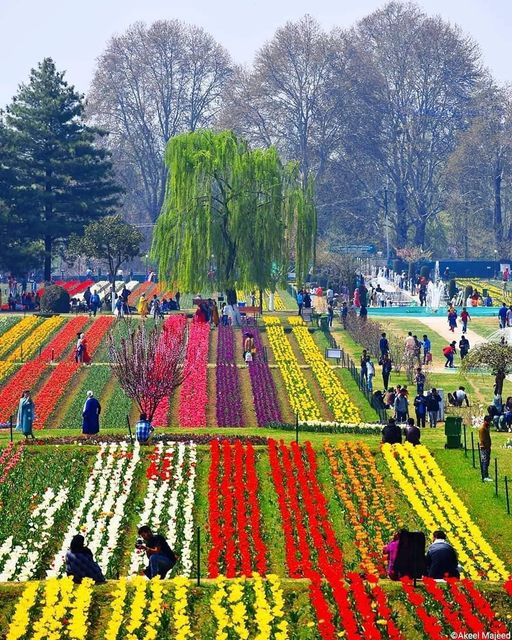Salix babylonica, commonly known as the
Weeping Willow, is a well-known deciduous tree that is native to dry areas of northern China and Kashmir but has become popular in gardens and landscapes worldwide. This tree is famous for its graceful, drooping branches that create a "weeping" appearance, making it a favorite for ornamental planting near water bodies.
Key Characteristics:
Growth Habit: The Weeping Willow typically grows to a height of 10-15 meters (33-50 feet), though some specimens can reach up to 25 meters (82 feet). It has a broad, rounded crown with long, arching branches that droop downwards.
Leaves: The leaves are narrow, lance-shaped, and light green, turning golden yellow in autumn before falling.
Flowers: Like other willows, Salix babylonica is dioecious, with male and female flowers on separate trees. The flowers are small and appear in catkins, though they are less showy than those of some other willow species.
Bark: The
bark is rough and gray, developing deep fissures as the tree matures.
Habitat: Weeping Willows thrive in moist soils and are commonly planted near ponds, lakes, rivers, and streams. They are also tolerant of a wide range of soil conditions but do best in full sun and well-drained soils.
Cultural Significance and Uses:
Ornamental Value: The tree is prized for its beauty and is often used in landscaping, particularly in large gardens or parklands. Its weeping branches and reflective foliage make it a popular choice for planting near water, where it creates a picturesque scene.
Shade and Shelter: The wide canopy of the Weeping Willow provides excellent shade, making it a valuable tree in hot climates or for creating shaded spots in parks and gardens.
Wildlife Habitat: Weeping Willows provide shelter and nesting sites for birds and other wildlife. The tree's catkins are also an early source of pollen for bees.
Care and Maintenance:
Watering: Weeping Willows require a good amount of water, especially during their early years. They are often found near water sources, where their roots can access ample moisture.
Pruning: Pruning is necessary to maintain the tree’s shape and remove any dead or damaged branches. It should be done in late winter or early spring before the new growth begins.
Pests and Diseases: Weeping Willows can be susceptible to pests such as aphids, caterpillars, and borers. They are also prone to fungal diseases like willow blight and canker, particularly in humid conditions.
Environmental Considerations:
Root System: The tree's roots are extensive and can be invasive, making it unsuitable for planting near buildings, sewer lines, or other infrastructure. The roots can spread out in search of water and potentially cause damage to foundations or underground pipes.
Short Lifespan: Weeping Willows generally have a shorter lifespan compared to other trees, often living around 30 to 50 years.
Myth and Symbolism:
The Weeping Willow has been associated with mourning and grief across various cultures, often symbolizing sorrow due to its drooping branches. However, in Chinese culture, the tree is also seen as a symbol of strength and flexibility.
Landscape Design:
When used in landscape design, Salix babylonica adds a dramatic, peaceful element to gardens, particularly near water features where its reflection can be admired. However, careful planning is needed due to its size and expansive root system.
Overall, Salix babylonica is an iconic and beloved tree that adds elegance and beauty to landscapes, especially in wet, open areas where its graceful form can be fully appreciated.
Availability; Tree/Cuttings
WhatsApp/Telegram: 9858986794
Ph: 01933-223705
e-mail: jkmpic@gmail.com
















